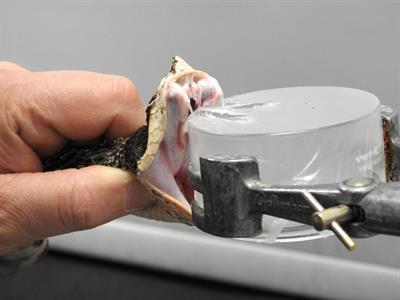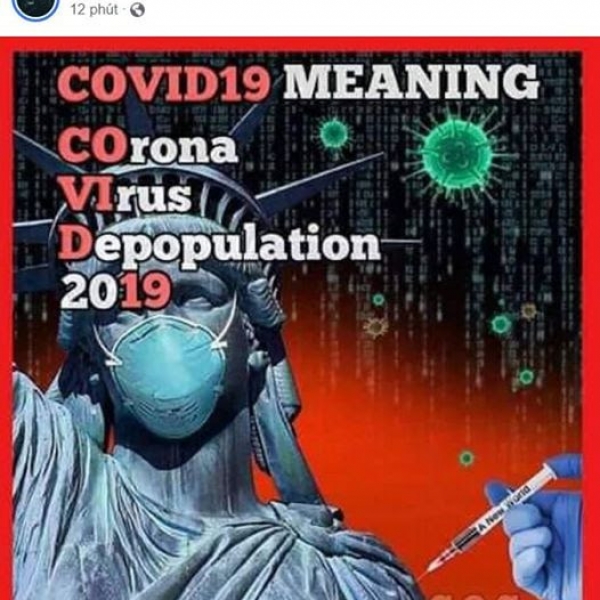Contact Admission
ORIGINAL CELLS CAN PROVIDE KEYS FOR TREATMENT OF STACKS OF TOXIC SOLO
Every year, people around the world become victims of about 1.8 - 2.7 million poisonous snake bites. Many of these people go untreated due to lack of access to covered treatments or health insurance, resulting in more than 100,000 deaths and three times the number of people permanently disabled. New therapies are needed to treat snakebites, a neglected public health problem. A new therapeutic tool to treat venomous snakebites can come from an uncertain source - stem cell studies.
There are about 250 types of poisonous snakes with the highest frequency of snake bites in Africa, Asia and Latin America. Snake venom is composed of many natural toxins, enzymes, proteins and peptides, which work together to damage or rapidly kill the tissues of the bitten human body. The exact venom composition is extremely diverse and depends on the species of snakes, making the treatment highly specific to each snake species. Snake bites can be fatal or lead to chronic, lifelong health problems, such as neurotoxicity that causes nerve paralysis, irreversible kidney damage after excessive kidney bleeding, or amputation.

Most of the available treatments are aimed at neutralizing the venom, such as anti-venom. In general, anti-venom is created by harvesting snake venom by squeezing the venom manually (see photo) and injecting small doses of the venom into a donor animal, such as a horse, to induce a reaction. immune and antibody production (antisera). These anti-venom antibodies are then injected into the snake-bitten victim, neutralizing the snake's poisonous components.
Making anti-venom this way is time-consuming, difficult to scale and must be done individually for each venomous snake. According to the World Health Organization, many anti-venom manufacturers have stopped production for the past 20 years, causing the supply to decrease and prices to rise sharply. Unfortunately, effective alternative treatments are scarce.
Use stem cells to fight snakebites
Recently, scientists have turned to stem cells to solve this problem. Researchers can use stem cells to develop small three-dimensional organs, called organoids, that maintain the essential features of specific organs or tissues. Scientists are trying for the first time to take organoids from snake stem cells to see if they can grow small venom-producing organs in the lab. Researchers dissected the venom glands of 9 species of snakes and successfully cultured organic matter from stem cells found in the snake's salivary glands (see Figure).
Notably, these organoids contain venom-secreting cells that function to induce snakes-specific effects on nerve and muscle cells in the laboratory. Furthermore, the organoid-derived venom has the same composition as the venom squeezed directly from a snake. Scientists are now hoping to establish a biological bank, or repository, of solid gland organic matter for all medically relevant venomous snakes, to create a non-venom supply. limit.
Since the publication of the original research paper, Jens Puschhof said the team has expanded its portfolio of poisonous snakes to include a wider selection of poisonous snakes. He added that using the venom from organic substances instead of milking solid "poisonous milk" could help create a safer, more reliable product, as there is a variation in the venom composition of each snake species. Next steps include using venom organoids to clean the toxic ingredients and create antibodies in the lab, rather than in horses, to produce more effective antidotes and boosters. global accessibility.
Snake venom can treat tumors?
The bio-bank of snake venom organic matter can provide treatments for other diseases. The U.S. Food and Drug Administration (FDA) has previously approved drugs derived from snake venom to treat acute cerebral infarction, acute coronary syndrome, and hemorrhage prevention while surgery.
Notably, early research indicated that peptides from snake venom may have anti-tumor effects. Snake venom components known as disintegration, such as Contortrostatin from Agkistrodon contortrix contortrix, may inhibit vascular formation and adhesion of cancer cells in cancer laboratory models. skin metastasis in humans. Additional research indicates that a powerful peptide found in the venom can interfere with blood vessel formation, reducing nutrient delivery to tumors in a mouse model of breast cancer. The availability of venom biological banks will allow scientists to delve deeper into the snake venom components to see if there is a chance for biomedical innovation.
The bite.
Every 5 minutes, 50 people are bitten by a snake, and one person will die in silence. The novel stem cell research has allowed scientists to successfully develop small venom-producing organoids in petri dishes, which could be used to develop affordable and accessible anti-venom therapies. reasonable. This scientific innovation in developing snake venom organic matter has the potential to save people around the world from deadly snake bites and other diseases.
Thanks to the three fellows in Hans Clevers' lab at the Hubrecht Institute in the Netherlands, Jens Puschhof, Yoep Beumer and Yorick Post, who have contributed to the work shown in Fig.
Source: Collector
Other news
- Commencement of Construction of Two Special Projects ( 10:35 - 30/12/2023 )
- EXPANDING A NEW COLLABORATION OPPORTUNITY WITH GLOBAL ENGAGEMENT INSTITUTE (GEI) ( 08:32 - 22/12/2023 )
- Red-shanked Douc Langur Has Become the Symbolic Mascot of Phan Chau Trinh University ( 08:45 - 14/12/2023 )
- FORGING INTERNATIONAL COLLABORATION WITH VOLUNTEERING JOURNEYS ORGANIZATION ( 08:52 - 06/12/2023 )
- TIẾP ĐÓN, TRAO ĐỔI HỢP TÁC VỚI TỔ CHỨC VOLUNTEERING JOURNEYS ( 08:44 - 06/12/2023 )
- RESEARCH IDEAS COMPETITION FINALS FOR STUDENTS ( 13:37 - 02/12/2023 )
- Khóa học “Bồi dưỡng nghiệp vụ sư phạm cho giảng viên Đại học, Cao đẳng” ( 13:19 - 28/11/2023 )
- Phan Chau Trinh University is listed in the World Directory of Medical Schools by WHO. ( 08:04 - 23/11/2023 )
- Phan Chau Trinh University Participated in the 13th World Congress of the World Society for Pediatric Infectious Diseases (WSPID 2023) – South Africa ( 14:30 - 21/11/2023 )
- Celebrate the 41st Anniversary of Vietnamese Teachers' Day 20/11/2023 ( 13:33 - 16/11/2023 )









